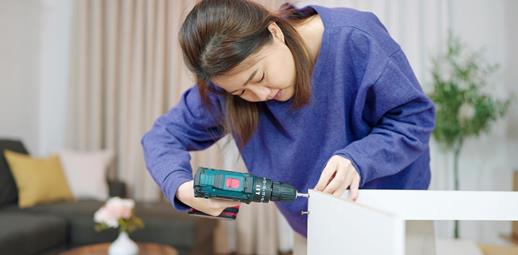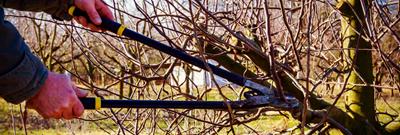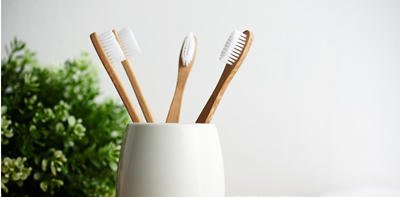
Think it’s time to invest in a basic tool kit for the home? Not sure where to begin?
Pick up these five items and your DIY efforts should get off to a smooth start.
EASY AS HACK
Not sure how to use the tools in our list? YouTube is your friend.
There are thousands of videos on the site that walk you through DIY basics. Just make sure you get ready to hit pause.
At a glance
- Deciding which tools you need starts with deciding which jobs you’re comfortable taking on yourself.
- Not all tools are made equal, so look out for signs of quality to know you’re making the right purchase.
- Keep an eye out for handy features like LED lights for improved visibility and secret compartments for storage.
basic toolkit must-haves
1. Tape measure
What to use it for:
No home tool kit is complete without a tape measure. They’re irreplaceable if you’re checking whether a piece of furniture will fit in your home or when measuring replacement curtains or blinds.
What to look out for:
If you want the best tape measures on the market with maximum accuracy, keep an eye out for an EC Class 1 classification, this means it has the highest level of accuracy. There are other levels of accuracy available, an EC Class 2 is good enough for a casual DIYer, but an EC Class 3 might leave a little too much room for error.
Decide whether you prefer to use centimetres and millimetres, or feet and inches, and check which appears on your potential measuring tape. Many include both metric and imperial units. Finally, check the length and width of the tape. 25 metres should cover most projects around the home and the tape should be at least 2.5 cm wide to avoid collapsing over longer distances.
2. Multibit screwdriver
What to use it for:
Screwdrivers can help with everything from replacing batteries on kids’ toys to assembling flat-pack furniture.
What to look out for:
Multibit screwdrivers minimise the number of screwdrivers you’ll need. They come in all shapes and sizes, so pick up a multibit screwdriver with the option to change tips that fit a wide range of screws.
And for a completely fuss-free experience, look for options with storage for multiple bits in the handle. The nifty compartments should save you time when looking for tips. Magnetic sets are handy too and help prevent losing parts.
Chrome-vanadium steel is usually a good sign of strength and durability, and sand-blasted tips should provide a secure grip on screw heads. Ratchet screwdrivers are an excellent option that allow you to apply turning force in one direction while moving freely in the opposite – much kinder on the wrists.
Read next: Seven of the best DIY YouTubers
3. Hammer
What to use it for:
More than a tool for hanging pictures on your wall, a hammer will help you drive nails into all kinds of surfaces. Think fixing loose floorboards, or even material to the bottom of chairs if you ever feel the need to become a DIY upholsterer. A decent claw hammer will also help you to remove nails and prise materials apart. It’s a multi-purpose decoration, construction and deconstruction tool.
What to look out for:
The best hammer for the home will be a simple claw option, forget a mallet, sledge or club! High-strength hammers usually start at the 16-ounce mark. Then you’ll need to consider handle materials. Steel and fibreglass are popular, but wood offers all the strength you should need while minimising vibration.
A flat rather than curved top will allow you get into tighter spaces. And if you’re a fan for neat extras, look out for side pullers to yank out nails from a different direction and magnet nail holders for extra convenience.
4. Cordless drill
What to use it for:
Can you really have a tool kit without power tools? We think not. A cordless drill offers you all the power and convenience you need for jobs around the home, such as putting up shelves, hanging pictures and assembling furniture.
What to look out for:
You want what’s known as a ‘combi drill’. The clever pieces of kit can be used as a screwdriver, for drilling holes into wood and metal, and should you need it, provide enough power to drill into brick too.
Nice-to-haves include LED lights to help you work in poorly lit or tight spaces, and stud finders. This useful feature helps you to find stronger parts of walls to hang heavy items. They can be bought separately but a built-in option saves vital space in your home tool kit.
5. Adjustable spanner
What to use it for:
A spanner is invaluable in a plumbing emergency or for those times when you just need to get a strong grip. There’s no substitute that offers the same tightening and untightening power that can be used on all types of pipes, fittings and nuts and bolts.
What to look out for:
An adjustable spanner shouldn’t be confused with a traditional spanner, which is fixed to a certain width. An adjustable spanner is a must for a basic tool kit, as it can be used on a variety of nuts, bolt and fittings. Take a look at handles too. A long handle might give you good leverage, but an overly long handle will only knock into obstructions while you work.
Thickness of the ‘jaw’ or top end of the tool will have an impact when working in tight spaces and again, chrome-vanadium steel offers the best durability. Finally, think about design. Find an adjustable spanner with a handle that feels comfortable for you.
And that’s your basic tool kit, complete.


